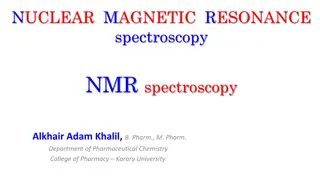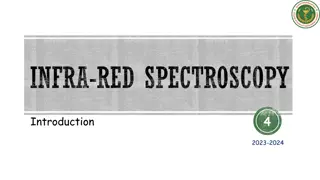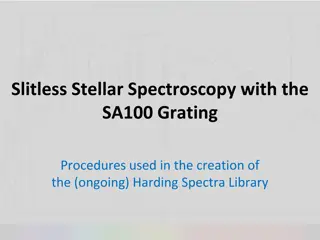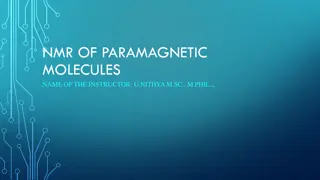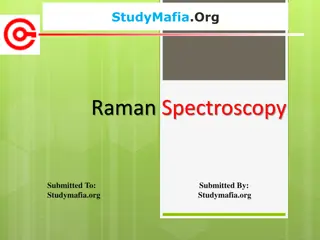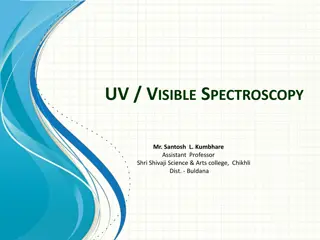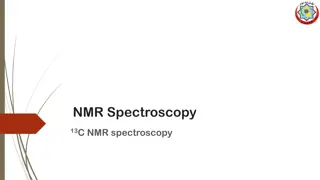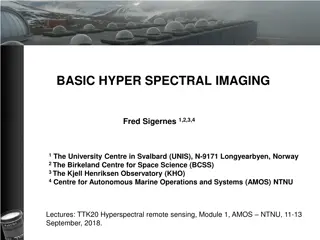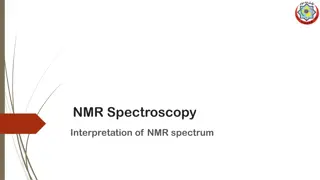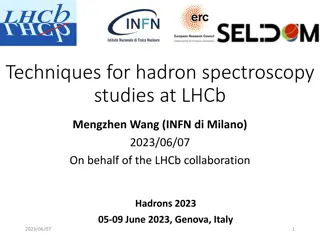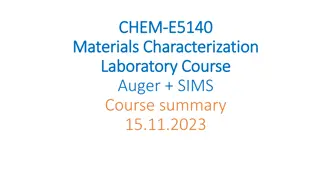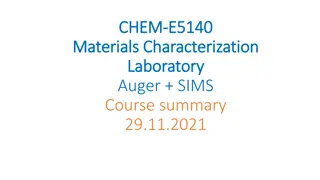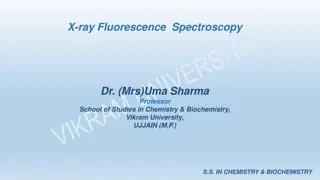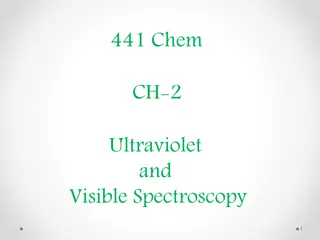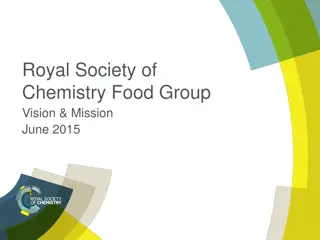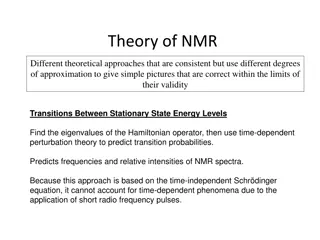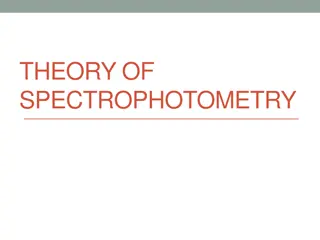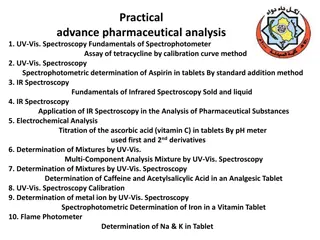Applications of UV-Visible Spectroscopy in Chemistry
UV-Visible spectroscopy is a powerful analytical technique used for detecting conjugation, isomers, functional groups, impurities, determining molecular weights, and studying chemical kinetics. This method provides valuable insights into the structure and properties of compounds, aiding in various fields of chemistry.
Uploaded on Mar 05, 2025 | 0 Views
Download Presentation

Please find below an Image/Link to download the presentation.
The content on the website is provided AS IS for your information and personal use only. It may not be sold, licensed, or shared on other websites without obtaining consent from the author.If you encounter any issues during the download, it is possible that the publisher has removed the file from their server.
You are allowed to download the files provided on this website for personal or commercial use, subject to the condition that they are used lawfully. All files are the property of their respective owners.
The content on the website is provided AS IS for your information and personal use only. It may not be sold, licensed, or shared on other websites without obtaining consent from the author.
E N D
Presentation Transcript
1 APPLICATION OF U.V. VIS. SPECTROSCOPY DR . PRATIMA KATIYAR
APPLICATION OF UV VISIBLE SPECTROTOMETRY 2 Ultra-violet spectroscopy 1-Detction of conjugation-It help to show relationship b/w different group, particularly with respect to conjugation. C=C,C C,C=O .C C. C=C C aromatic ring 203.4 254 water 2-Detection of geometric isomers-Trans isomers exhibit - max at slightly lower wavelengths with large extinction coefficient cis For example- 2 stilbene (C6H5-CH=CH-C6H5) the trans shows max = 294 nm = 24000 Cis - max = 278 nm = 9350 Detection of functional group : it is a possible to detect the three of certain functional group with help of UV spectrum.
3 For exam .even the absence of any absorption above 200nm is of some utility since it shows the absence of conjugation carbonyl group and benzene ring in compound. Qualitative analysis-by comparing the absorption spectrum with spectrum of known compound .A refence spectrum is found in reference berk. Detection of impurities-impurities in organic compound. 1.bond due to impurity .are U. intense can detected in transport. 2. The organic comp. saturated little absorption Unsaturated strong absorption For example- impurity in cyclohexane in benzene. It detect by in absorption at 225 nm
4 Molecular weight determination- it can be measured by provide suitable derivation of these compound could be prepared this method is based on derivative formation. For example- if are interested the determining the molecular weight of any amine First of all it is converted to amine picrate then a known conc. Of amine picrate is dissolved and measured its max value at 380 nm after this calculate conc. Of solution gm/liter by using formula C= logI0 / It max *l C can calculated. From c & w the molecular weight of amine picrate calculate and finally calculate the molecular weight of amine by substracting total molecular weight of amine picrate with only picrate molecule
5 Chemical kinetics-Usedto study the kinetic of reaction . In order to determine the kinetics of reaction the charge in concentration of either a reactant or product with time is measured. IN body fluids The determination of drug and metabolite in body fluids part of serval field of invertigath medicines. In Quantitative analysis- assay of medicinal substance-assay of absorbing substance may be quickly carried out by preparing a solution in transparent solvent & measuring its absorbance at a suitable wavelength. The wavelength normally selected is a wavelength of maximum absorption ( max). Generally the concentration should be adjusted to give absorbance approx., 0.9. around c the accuracy & precision of measurement on optimal.
METHOD OF STANDARD ABSORPTIVITY VALUE 6 This procedure is adopted by official compendia for e.g. B,P,I.P. for a stable substance that have reasonable bonds & c ax practically unaffected by variation of instrumental parameter eg. Sligt width , scan spend etc. The use of standard e value avoids to need to prepare a standard solution of reference in order to determine its absorptivity, is of advantage in situations where it in difficult to obtain a sample of reference substance . E.g.- calculate the concentration of methyl testosterone in ethanolic solution of c the absorbance in 1cm at max =241 nm was found 0.890 . If A 1%= at max = 241nm =540. A = A 1%b. 0,890=540* 1*c C= 000165 g/100nm
USE OF CALIBRATION GRAPH 7 The absorbance of no. (4-6)of standard solution of reference substance at concentration encompassing the sample concentration are measured & a calibration graph is constructed .The concentration of analysis in sample solution in read from graph as concentration corresponding to absorbance of solution. Calibration data an essential if absorbance or linearity is depend on assay condition & chemical derivative is required for sample as analysis . E.g . The absorbance value at 250 nm of 5 std,50ml a blank & sample &drug
SINGLE POINT OR DOUBLE POINT STANDARDIZATION- 8 The single point procedure involves the measured . The absorbance of sample solution &of std &sample similar manner ideal in concentration of std solution & sample solution should is meanly close. c test = A test c std A std C test= ( A test A std) (c std1 c std 2)+ c std .
REFERENCES 9 Introduction of spectroscopy, Donald A. pavia Becket A.H. and stenlake J.B. Practical Pharmaceutical Chemistry Vol I & II Willard , Instrumental Analysis of methods
10 THANKS FOR ATTENTION


